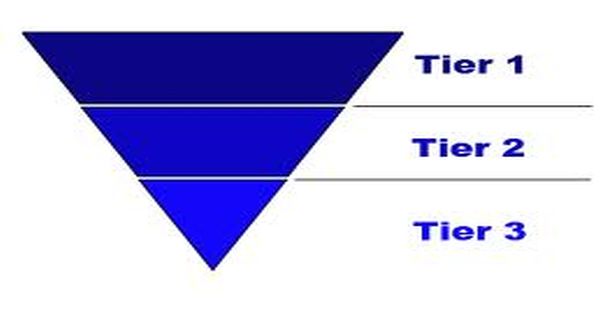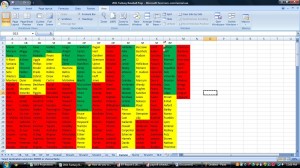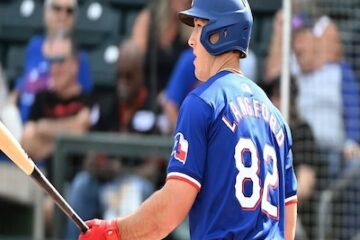Fantasy Baseball Draft Strategy: The Importance of Tiered Positional Rankings

If you ask a fantasy expert what the most important element of a successful fantasy draft is, they’ll often respond with “preparation.” It’s hard to argue that reading a bunch of articles, listening to different podcasts, and mock drafting are all very helpful to a fantasy player. Do those things. But for my money, the most important thing you can do to prepare for a draft is simply enter it with two things.
First, make sure you have a sheet of paper with a set of overall rankings (with auction values if necessary). Second, make sure you have a sheet of paper with tiered positional rankings. Below is a somewhat distorted example of the tiered positional sheet (click for better clarity) that I made for a friend to use a few years ago for his 10-team snake draft:
The reason you need both of these sheets is to help you make sure you take the best player available whenever possible rather than being too scared of positional scarcity. You certainly need to be mindful of positional scarcity so that you don’t miss out on the few useable players at certain positions. But too often people will end up ceding too much value by taking a player at a shallow position before they have to.
The reason having these two sheets can help you avoid that is that the positional sheet should tell you when you can wait on players at certain positions and when you have to go ahead and take one. The idea is that you ignore positional scarcity and take the best player left on your overall ranking sheet unless there are only a couple players left above your cutoff at a certain position. For example, the cutoff for catchers in the sheet above was Montero. Whenever it was your turn to pick and only Wieters and Montero were left it would then be OK to take a catcher.
It’s obviously preferable if you create your own cheat sheets through the process of gathering as much info as you can from experts and practicing in mock drafts. Taking the knowledge and opinions of others and shaping that into your own preferences is ideal. But if you don’t have the time and/or the confidence to do that, you can always find these cheat sheets on many sites. I’d recommend our rankings sheets in our 2013 Draft Guide, but wherever you get them just make sure those two things are with you on draft day.
_______________________________________________________________________________________________________
I recently participated in a mock draft that will appear in the Big Leagues Magazine and put my two sheet system to work. I also have another two “sheet” system I employ daily. Unless I have Mexican food. Then it’s a three to four “sheet” system. But I digress. Allow me to point out a few examples of where my positional sheet helped me make the right call.
In round six I was faced with the decision of taking an outfielder or a starting pitcher. I already had two outfielders, but this was a 14 team league using five outfielders, so it was not a position of depth in this format. I had not drafted a starter yet, but at that point four of my top 10 pitchers were still on the board and Shane Victorino was highest ranked player on my list and the only outfielder remaining from the tier I had him in. There were 18 picks until my next pick, so I decided to roll the dice and take the guy I thought provided the most value and hope one of those pitchers fell to me. As luck would have it, three of them went, but the 4th, R.A. Dickey fell to me in the 7th round.
In the 12th round Anibal Sanchez was still available and he was easily the highest rated player left on my overall rankings list. But I had yet to draft a catcher and was worried I’d miss out completely on the position, especially since this was a two-catcher format. But both Brian McCann and A.J. Pierzynski were still available and both were players I had rated as back-end #1 catcher options in a 14-team league. So I selected Anibal and went with the best value on the board. McCann was selected before things got back to me in the 13th, but Pierzynski was still there so I grabbed him then.
After 20 rounds my roster had all 14 starting hitting positions filled up, four starters and my two closers. My plan for the 21st round and beyond was to start filling out that pitching depth with a bunch of guys I think are being undervalued this year. Guys I love like Dillon Gee, Brandon Beachy, Erasmo Ramirez, Jaime Garcia, Jason Hammel, Alex Cobb and Tom Milone were all available. But because there were so many left, I couldn’t pass up the opportunity to select Chris Young. Young was by far the best player left on my overall sheet, and I couldn’t pass up the opportunity to add to my lineup depth. And it worked out because I ended up getting Gee in the 22nd, Garcia in the 23rd, Hammel in the 26th, and Milone in the 27th.
There will be occasions where this strategy will burn you. You’ll have two guys left in a tier and put them off until the next pick because there’s more value to be had elsewhere and they’ll both be gone when it’s your turn again. But if you’re smart and don’t get too risky with it, that won’t happen to you much. In the long run, taking the best value will make your team more valuable.
You can follow Brett on Twitter @TheRealTAL.






